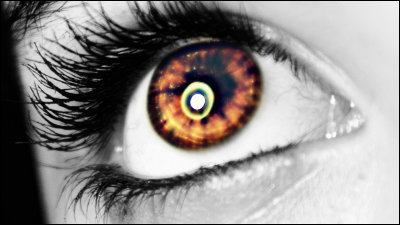Successful in producing human retina in laboratory, light of new possibility for color vision disorder and glaucoma treatment

by Skitterphoto
Usually, the retina develops when the baby is in the womb, so it is difficult to observe and study the state of development. Therefore, researchers at Johns Hopkins University tried to "grow the retina in the laboratory", which was considered "impossible" so far, to clarify how color vision develops Did. This research result is thought to be greatly useful for treatment of color vision disorder and glaucoma.
Thyroid hormone signaling specifies cone subtypes in human retinal organoids | Science
http://science.sciencemag.org/content/362/6411/eaau6348
Secrets Of Color Vision Emerge From Lab - Grown Human Retinas: Shots - Health News: NPR
https://www.npr.org/sections/health-shots/2018/10/11/656560767/human-retinas-grown-in-a-dish-reveal-origin-of-color-vision
According to Kiara Eldred, one of the research teams, it is difficult to make a three-dimensional organ "retina organoid " in a test tube, and it is said that the researcher took a few years a year until completion. It takes a year to make immature retinal cells into organoids, "It is a little self-reliant" in a few weeks after the cells grow into retinal arganoids, but it seems necessary to care every day for the first week. And "If you are lucky you can grow the cell into a three-dimensional structure like a baby inside your womb."
Originally, Eldred and his boss, Bob Johnston, were studying the vision of fly. However, depending on the animals "what color perceives" is different, for example the mouse can not perceive red. In other words, in order to know how human color vision develops, it is necessary to produce the human retina in the laboratory. Therefore, the two began the research "to raise the human retina in the lab".

by PublicDomainPictures
In the body of a human fetus, the one that develops first is a cell that perceives blue, then the cell that perceives red and green develops. From studies on animals, we knew that the function of thyroid hormone is involved in the development of a cone that perceives color. Therefore, when researchers gave thyroid hormone to cells developing in the test tube, the organoides given thyroid hormone seems to have produced more cones that perceive red / green color.
After that, researchers confirmed that thyroid hormone has become a trigger to produce color vision over several years. However, it is not known why the cone develops only the perception of green and red.
Understanding "How color vision develops" is considered to be useful for treatment of color vision disorder and macular degeneration. Researchers say that one of the goals of this research is "to regain color vision to people with color vision disorder," understanding this research will accelerate the research on existing color vision disorder treatment. Another goal is to use retinal osteroids to understand diseases that cause blindness such as glaucoma and macular degeneration.

by weinstock
In order to proceed with the research, Mr. Johnston wants to create additional retinal osteroids in the lab. According to Steven Becker of the National Institute of Ophthalmology Research not participating in the study, at the beginning when Johnston et al. Started research, many researchers were skeptical about the idea that retinal can be created in the laboratory, but this research result He seems to believe that a new treatment method will be born.
To further develop retinal osteroids, the National Institute of Ophthalmology Research has sponsored a science competition with a prize of 1 million dollars.
NIH solicits next-generation retina organoids in prize competition | National Eye Institute
https://nei.nih.gov/content/nih-solicits-next-generation-retina-organoids-prize-competition
Related Posts:
in Science, Posted by darkhorse_log







